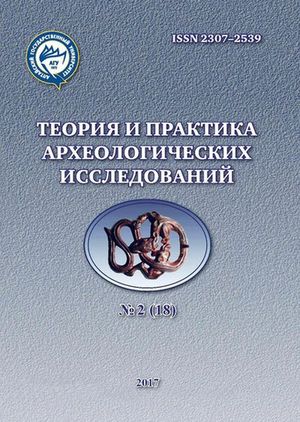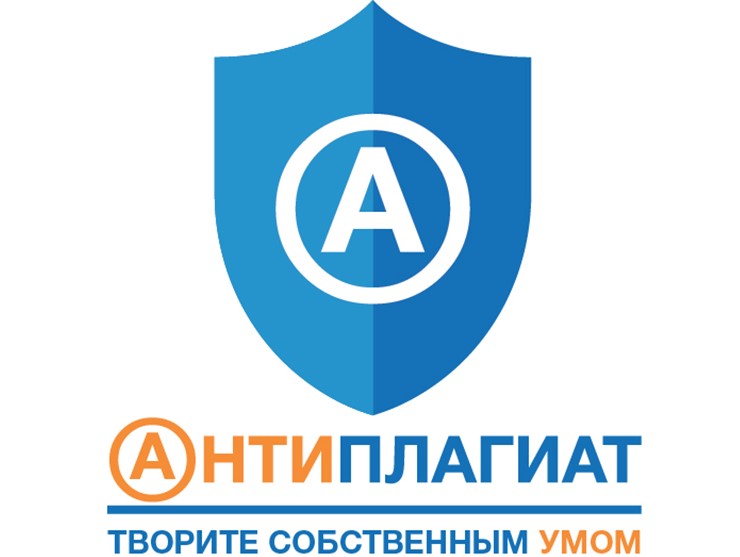THE EARLY IRON AGE BURIAL GROUND KASPAN-6 IN JETUSY
Abstract
The article presents results of the research work on the kurgans of the Saka time in Jetysu. Based on the analysis of burial construction elements it is assumed that socially important people were buried in the Kaspan kurgans. Some elements of complex funeral and commemorative events were revealed. A number of elements such as parameters of grave construction, presence of earthwork, clay filling, dromos, skull trepanation allow speaking about elite features of such burials.
In 2013-2015 the expedition of the A.Kh. Margulan Institute of Archaeology with the Legabue Study and Research Centre (Venice, Italy) conducted research of a large burial ground Kaspan (Kerbulak District, the Almaty region). Besides the authors, on the Kazakh side such researchers as K.A. Jambulatov, T.M. Duisenov, D.B. Duisenbay took an active part in field works and Massimo Kazarin (Legabue Study and Research Center) and Nicolo Fiore (University Ca ‘Foscari) participated in the work on the Italian side.
The studied area is a part of south-east Jetysu (From Kazakh “jety” - seven, “su” - river. The Land of Seven Rivers). The region includes different natural landscape zones: mountains with eternal snow, vast piedmont plains, sandy deserts, numerous rivers. In the north it is bounded by the Lake Balkhash. The geographic region, called the Ile-Balkhash basin, is identified with the names of the Jetysu seven major rivers. The largest river is the lie. The rest of the rivers are Karatal, Bien, Aksu, Lepsy, Baskan, Sarkand originate in Jetysu Alatau. A large number of these mountain rivers flow into the Lake Balkhash.
Monuments near the village Kaspan are confined to the towering points on the ground, they are located in the valley of the Bizhe (Byzhy) river. The valley is surrounded by the Jetysu Alatau mountains. It is known that treasure was found in the Bizhe valley, in an area of modern Algabas village. It belongs to the early Saka time.
Downloads
Metrics
References
Abetekov A.K. О pogrebenii sobaki v usun’skom kurgane v Chujskoj doline [About Dog Burials in Usun Kurgan in the Chui Valley]. BRAI (Brief Reports of Arcjaeology Institute). 1978. №154. Pp. 59-65.
Akishev K.A., Akishev A.K. Problema hronologii rannego jetapa sakskoj kul’tury [The Problem of the Early Stages Chronology of the Saka Culture]. Archaeological Monuments of Kazakhstan. Alma-Ata : Nauka, 1978. Pp. 8-63.
Beisenov A.Z. Drevnie sokrovishha Saryarki [Ancient Treasures of Saryarka]. Almaty, 2014. 196 p.
Beisenov A.Z., Ismagulova A.O., Kitov Ye.P., Kitova A.O. Naselenie Central’nogo Kazahstana v I tysjacheletii do n.je [The Population of Central Kazakhstan in the Ist Millennium BC]. A.Kh. Margulan Institute of Archaeology. Almaty. 2015. 188 p.
Gutsalov S.Y. Volch’e plemja (k semantike obraza volka v iskusstve drevnih kochevnikov Juzhnogo Urala) [Wolf Clans (to the Semantics of the Image of the Wolf in the Art of Ancient Nomads of the South Ural)]. Antiquities of Eurasia: from the Early Bronze Age to the Early Middle Ages. In Memory of Olk-hovskyi VS. Collective Articles. Moscow, 2005. Pp. 37-447.
Gutsalov S.Y. Pogrebal’nye pamjatniki kochevoj jelity Juzhnogo Priural’ja serediny I tys. do n.je. [Funerary Monuments of the South Ural Nomadic Elite in the Middle of the Ist Millennium BC]. Archaeology, Ethnology and Anthropology of Eurasia. 2007. №2 (30). Pp. 75-92.
Jumabekova G.S., Bazarbayeva G.A. V poiskah sledov svernuvshejsja pantery: k izucheniju pam-jatnikov Majemerskoj stepi [In Search of Traces of a Coiled Panther: Studies of the Monuments of the Mayemer Steppe]. History and Archaeology of Semirechye Collective Articles. Almaty, 2011. Pp. 67-88.
Ismagil R. Sarmatskoe okno v Evropu [Sarmatian Window to Europe]. Questions of Archaeology of Western Kazakhstan. Collective articles. Vol. 1. Samara, 1996. Pp. 176-211.
Itina M.A., Yablonsky L.T. Saki Nizhnej Syrdar’i (po materialam mogil’nika Juzhnyj Tagisken) [Lower Syr-Darya Saka (Based on the Materials of the Burial Ground South Tagisken)]. Moscow : “Russian Political Encyclopedia”, 1997. 187 p. with illustrations.
Kilunovskaya М.Е. Zakonomemosti “razgrablenij” kurganov skifskogo vremeni v Tuve [Patterns of “Looting” Kurgans of the Scythian Period in Tuva]. Abstracts. Proceedings of the IV (XX) All-Russia Archeological Congress in Kazan. Kazan, 2014. VoI. II. Pp. 110-112.
Moshkova M.G., Malashev V.Y, Meshcheryakov D.V Dromosnye i katakombnye pogrebenija Ju-zhnogo Priural’ja savromatskogo i rannesarmatskogo vremeni [Dromos and Catacomb Burials of South Ural of Savromat and Early Sarmatian Time]. Funeral Rite of the Early Eurasian Nomads: Materials and Research on the Archaeology of the South of Russia. Vol. Ш. Collective articles. Rostov-on-Don: Publishing House of the Southern Scientific Center RAS, 2011. Pp. 302-317.
Ochir-Goryaeva M.A. Drevnie vsadniki stepej Evrazii [Ancient Horsemen of Eurasian Steppes]. Moscow : Taus, 2012. P. 472.
Papanova V.A. Pominal’no-pogrebal’nye obrjady nekropolja Ol’vii, svjazannye s kul’tom htonicheskih bogov i geroev [Memorial-Funeral Rites of Olbia Necropolis Associated with the Cult of Chthonic Gods and Heroes]. Proceedings of the Faculty of History of Zaporizhzhya State University. Zaporozhye, 2004. Vol. 18. Pp. 296-299.
Sinika B.C. О kul’te sobaki u skifskogo naselenija Severnogo Prichernomor’ja v VI-II vv. do n.je [The cult of Dos in the Scythian Cult of the Northern Black Sea Coast Population in the 6th-2Ildcc. ВС]. International Relations in the Black Sea Basin in the Scythian and Ancient times: Collective Articles of XI International Scientific. Conference. Rostov-on-Don, 2006. Pp. 58-60.
Troitskaya T.N., Shishkin A.S. О nekotoryh pogrebenijah zhivotnyh v Novosibirskom Priob’e [Some Burials of Animals in Novosibirsk Ob]. Herald of Archaeology, Anthropology and Ethnography. 2004. №4. Pp. 114-118.
Hrshanovsky V.A. Zhertvoprinoshenie v pogrebal’no-pominal’noj obrjadnosti evropejskogo Bospora II v. do n.je. - IV v. n.je. (po materialam arheologicheskih raskopok nekropolej Ilurata i Kiteja) [Sacrifice in the Funeral and Memorial Rites in European Bosporus in the 2nd BC - 4th BC (Based on Archaeological Excavations and Ilurat and Kitei Necropolis). Sacrifice: Ritual in Culture and Art from Ancient Times to the Present Day. Moscow, 2000. Pp. 241-252.
Copyright (c) 2017 Теория и практика археологических исследований

This work is licensed under a Creative Commons Attribution-NonCommercial-NoDerivatives 4.0 International License.
Theory and Practice of Archaeological Research is a golden publisher, as we allow self-archiving, but most importantly we are fully transparent about your rights.
Authors may present and discuss their findings ahead of publication: at biological or scientific conferences, on preprint servers, in public databases, and in blogs, wikis, tweets, and other informal communication channels.
Theory and Practice of Archaeological Research allows authors to deposit manuscripts (currently under review or those for intended submission to ABS) in non-commercial, pre-print servers such as ArXiv.
Authors who publish with this journal agree to the following terms:
- Authors retain copyright and grant the journal right of first publication with the work simultaneously licensed under a Creative Commons Attribution License (CC BY 4.0) that allows others to share the work with an acknowledgement of the work's authorship and initial publication in this journal.
- Authors are able to enter into separate, additional contractual arrangements for the non-exclusive distribution of the journal's published version of the work (e.g., post it to an institutional repository or publish it in a book), with an acknowledgement of its initial publication in this journal.
- Authors are permitted and encouraged to post their work online (e.g., in institutional repositories or on their website) prior to and during the submission process, as it can lead to productive exchanges, as well as earlier and greater citation of published work (See The Effect of Open Access).








2.jpg)



